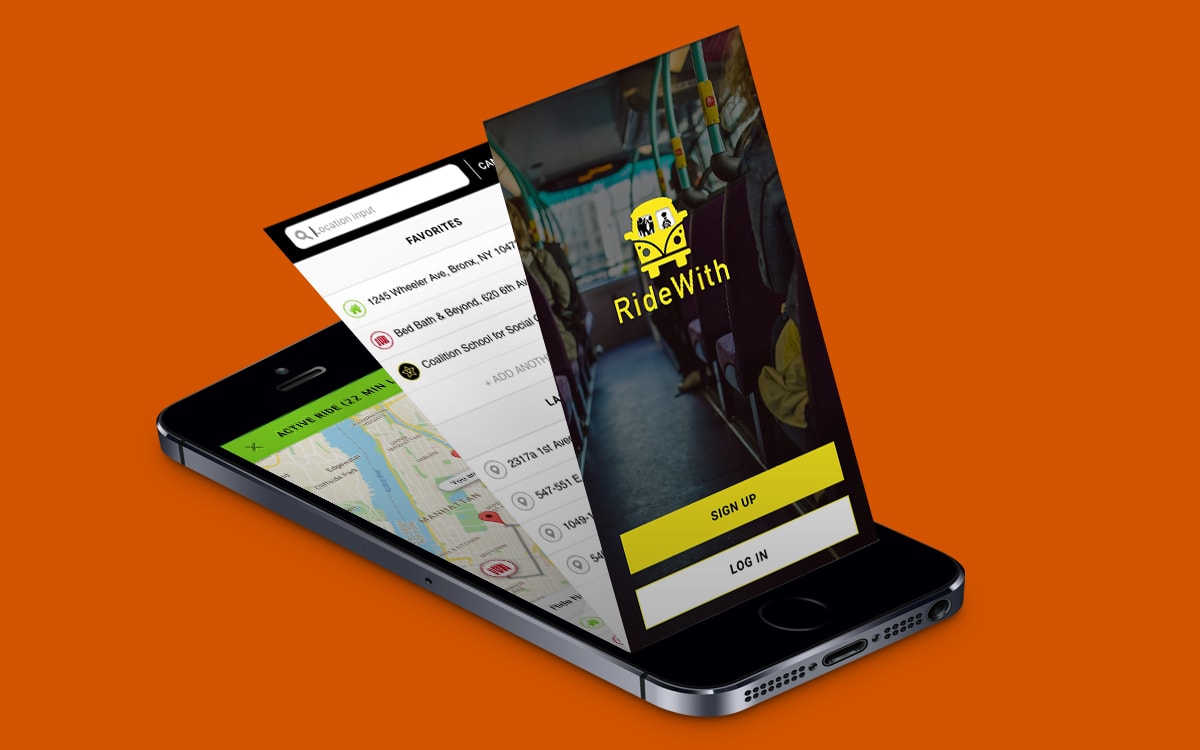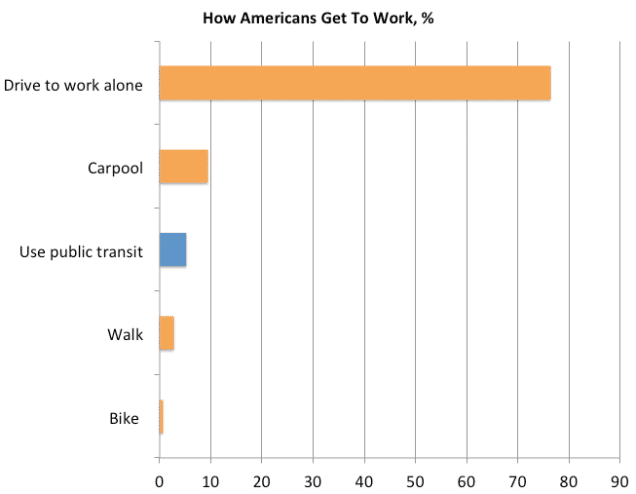
Introduction
RideWith is an Affordable, collaborative ride transportation service app-based, which takes the passengers to work and back home after, based on their schedule, pick-up and drop-off location, by using the personalized route for the drivers based on the passenger’s details.
The Idea
Section 1
What do I see here?
First, we will define the pain or problem we found in a specific segmentation.
Second, we will describe our potential solution or solutions for that problem.
Last, we will hypothesize about how we think our solution will solve the segment pain or problem:
User Segmentation
USA Passengers who go to work and back home using public transportation.
The Pain
People put a lot of energy and efforts into using public transportation when they go to work and back home, which makes the process sometimes frustrating as they need to:
* Walk to the bus/train station from home and go to work from station, sometimes can be involved with long distances.
* Go out earlier so they will not miss the bus (time waste).
* Change bus/train in the middle of the ride and take another one, as the first doesn’t get close to their work.
* They cannot use a taxi as it is too expensive, and it is not affordable on a daily basis to order it for one person only.
The Solution
Affordable, collaborative ride transportation service which takes the passengers to work and back home after, based on their schedule, pick-up and drop-off location, by using the personalized route for the drivers based on the passenger’s details.
The service is passenger needs based and not on existing lines of the transportation providers, which means that it collects information from passengers (that are not related to each other), analyze the schedule and locations of them and automatically fits the best driver and route to the passengers.
The passenger will get a real-time location and ETA for his ride, also details during the drive about the route and ETA about arrival to his job and back to his home.
The drivers and the cars will be part of contracts with private transportation service who hold his vehicles (buses, vans, taxis and more) and drivers.
Hypothesis
I Believe that people from the USA who go to work and back home while using public transportation have a pain using it as it does not fit their schedule and location.
If they had an affordable personalized ride that fits their location and schedule, it would help them to save time and efforts on their journeys to work and back home.
Market Research
Section 1
What do I see here?
Under this section, we will research the potential market for our solutions based on the segmentation for which we have solved the problem or pain.
We will use two tools from the product and market research worlds:
1. Market size analysis: Evaluate our potential market size and frame it into three main phases:
- TAM or Total Available Market is the total market demand for a product or service.
- SAM or Serviceable Available Market is the segment of the TAM targeted by your products and services which is within your geographical reach.
- SOM or Serviceable Obtainable Market is the portion of SAM that you can capture.
2. Competitors landscape: Research for possible competitors, list them and show the fundamental differences between our solution and the competitors, so we can understand how our solution fits the problem or pain more efficiently.
Market size analysis
TAM
40M
30% of U.S passengers who drive alone to work with their car (32M) + U.S passengers who go to work using public transportation (8M)
SAM
7M
U.S passengers who go to work using public transportation
SOM
308K
Bronx County, New-York passengers who go to work using public transportation
As we can see, most of the people who go to work today in the US are driving alone to work by their car (75%),
We believe that if the public transportation will be more personalized to the worker than we will see growth in using the service with people who used to go to work by driving alone.
* As we can see at the graph above, people are using Carpool more than public transportation, which can show us that people want to use an alternative than drive alone to work by their car, and they are open-minded to sharing a ride if it fits their location and schedules.
Some Interesting Quick Facts:
- In 2016, Americans took 10.4 billion trips on public transportation.
- People board public transportation 35 million times each weekday.
- Since 1995, public transit ridership is up 34 percent, outpacing population growth, which is up 21 percent, and vehicle miles traveled (VTM), which is up 33 percent.
- Public transportation is a $61 billion industry that employs nearly 400,000 people.
- More than 6,800 organizations provide public transportation in the United States.
Resources:
http://www.apta.com/gap/advocacy/
Competitors Landscape
Bus
Train
Via
Bridj
Uber
Lyft
Gett
Waze carpool
Moovit carpool
Your car
Zimride.com
Carpoolworld
Ridesharing
ZipCar
Getaround
The User
Section 1
What do I see here?
It is time to better define our target users with a tool called ‘User Persona.’
We will animate the users, give them a form and figure and specify needs based on our segmentation.
This technique helps to fine-tune our solution to an actual user.
User Segmentation
USA Passengers who go to work and back home using public transportation.
User Persona
Working Ruth

“Going to works should be easier”
Bio
Hi guys, my name is Roth, I work as a manager in a local flowers store, and I love my work. Unfortunately, the public transportation in my area is terrible, which makes my road to work frustrating.
As much as I love my work, drive my car into the center is not an option, as I need to pay so much for gas and parking, and I cannot afford private taxi either.
Age: 25-64
Occupation: Store manager in a local flowers store
Family: Married with two kids
Location: Bronx, New York, USA.
Goals
- Arrive to work fast as possible
- Ride to work should be affordable
- Get the ride as near home as possible
- Spend as much time as possible on personal life, family and work and less on transportation
Frustrations
- Fit his schedule to the public transportation
- Walk/drive to the public transportation station
- Change bus/train during his trip and wait for another one
- Waste time on long road and stops during the ride to work instead going directly
Motivations
Preferred Channels
Business
Section 1
What do I see here?
Now that we have decided about the product, and whom it will serve, it is essential to check the business-side from any aspect.
For the purpose we will use a great tool called ‘Lean Business Model Canvas,’ we will inspect all business concerns to make sure we can generate profit from our product by evaluating the resources needed to build the solution, acquire new users and where, what are the revenue streams, etc.
Lean business model canvas
ProblemPeople put a lot of energy and efforts into using public transportation for work and sometimes frustrating as they need to:
* Walk to the bus/train.
* Go out earlier so they will not miss the bus.
* Change bus/train.
* Taxi as it is too expensive.
|
SolutionAffordable, collaborative ride transportation service which takes the passengers to work and back home after, based on their schedule, pick-up and drop-off location, by using the personalized route for the drivers based on the passenger’s details.
|
Unique Value PropositionPersonalized, affordable and collaborative public transportation to work that fits your schedule and location
|
Unfair AdvantageActive transit company in New York
Customer base of companies who use our services to order their employees a ride
|
Customer SegmentUSA Passengers who go to work and back home using public transportation
Potentially people who used their car alone to work so far.
|
|---|---|---|---|---|
Key MetricsNumber of active users (take at least 3 rides a week)
Avg rides/week per user
Avg riders per transit
|
ChannelsBusinesses/Companies
Local communities
PPC
PR
|
|||
Cost Structure2 x Developers
1 x Designer
2 x Co-founder Salary
Bizdev expenses
Marketing expenses
Transportation contracts
|
Revenue StreamRide commissions from the riders
Subscriptions model for riders
Companies contracts
|
|||
Design
Section 1
What do I see here?
Once we have gathered information about our idea, it time to bring it life and to visualize it.
We will decide regarding the design of our product and choose the general overlook that our users will first encounter.
Creating an initial design helps us see and feel what it will be like, and therefore is vital to the process.
Prototype
Section 1
What do I see here?
The design is ready! It is time to take the design screens and put it together into a live working prototype that can demonstrate the flow of our solution.
Try and interact with the product as much as possible to reveal any flaws that may need attending and to get a better idea of how it works.














